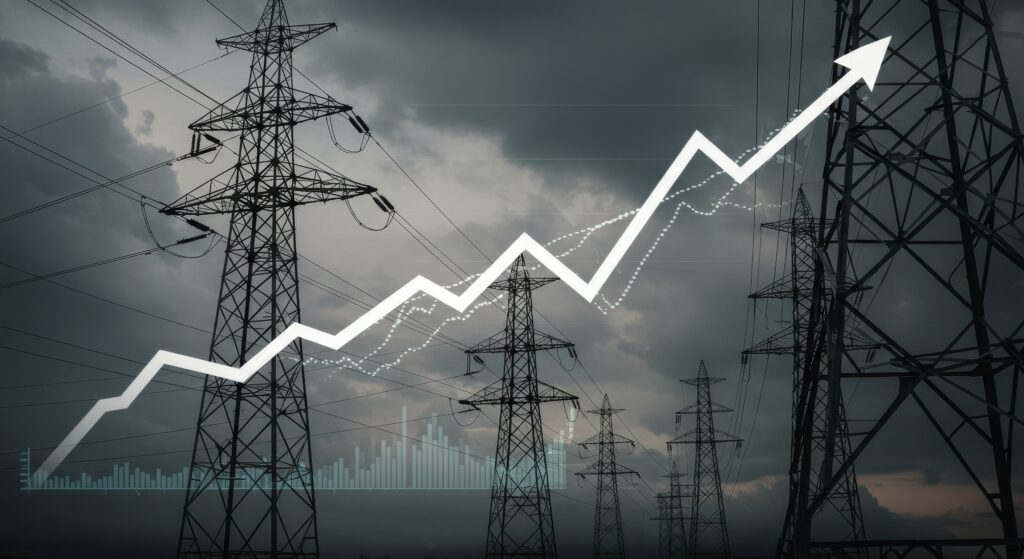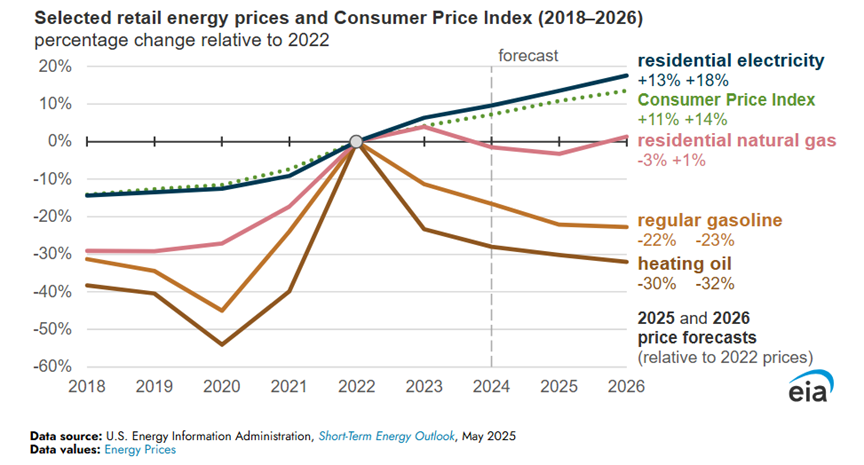
The US Energy Information Administration reports that retail electricity prices in the U.S. have risen faster than inflation since 2022 and are expected to continue increasing through 2026, according to the EIA. While fuel prices like gasoline and heating oil have declined since 2022, electricity costs have steadily climbed, especially in high-cost regions like the Pacific, Middle Atlantic, and New England. These price hikes are driven by rising utility investments in aging infrastructure and distribution systems. On average, U.S. households spent $1,760 on electricity in 2023—second only to gasoline among energy-related expenses. They write:
Retail electricity prices have increased faster than the rate of inflation since 2022, and we expect them to continue increasing through 2026, based on forecasts in our Short-Term Energy Outlook. Parts of the country with relatively high electricity prices may experience greater price increases than those with relatively low electricity prices.
Overall, U.S. energy prices rapidly increased from 2020 to 2022 as economic activity recovered after the worst of the pandemic and Russia’s invasion of Ukraine interrupted energy supply chains. Since 2022, nominal prices for many fuels have declined, particularly for those such as gasoline and heating oil that are tied more closely to crude oil prices, which are affected by international markets. Electricity prices, though, have continued a steady increase.
Regions with already high electricity prices may see larger increases
Although we expect the nominal U.S. average electricity price to increase by 13% from 2022 to 2025, our forecasts for retail electricity price increases differ across the country. Residential electricity prices in the Pacific, Middle Atlantic, and New England census divisions—regions where consumers already pay much more per kilowatthour for electricity—could increase more than the national average. By comparison, residential electricity prices in areas with relatively low electricity prices may not increase as much.
Electricity prices include more than the cost of generating electricity
Retail electricity prices include the cost of generating, transmitting, and delivering electricity to ultimate customers, as well as taxes and other fees. In recent years, electric utilities have increased capital investment to replace or upgrade aging generation and delivery infrastructure, among other factors. Between 2013 and 2023, electricity prices closely tracked inflation, but we expect increases in electricity prices to outpace inflation through 2026.
Utility spending on electricity distribution has surpassed spending on electricity transmission and production, according to our analysis of utilities’ financial reports to the Federal Energy Regulatory Commission. The generation-related portions of retail electricity typically lag changes in wholesale spot prices of electricity generation fuels such as natural gas and coal depending on the customer contract agreements.
Electricity expenditures are second only to gasoline
U.S. consumers spent an average of about $1,760 on electricity expenditures in 2023. Among fuel-related expenditures, electricity expenditures are surpassed only by gasoline, which averaged nearly $2,450 in 2023, according to the most recent data available from the U.S. Bureau of Labor Statistics’ Consumer Expenditure Survey. Annual fluctuations in electricity expenditures tend to be more moderate than gasoline prices, which tend to follow changes in global crude oil prices.
Read more here.





